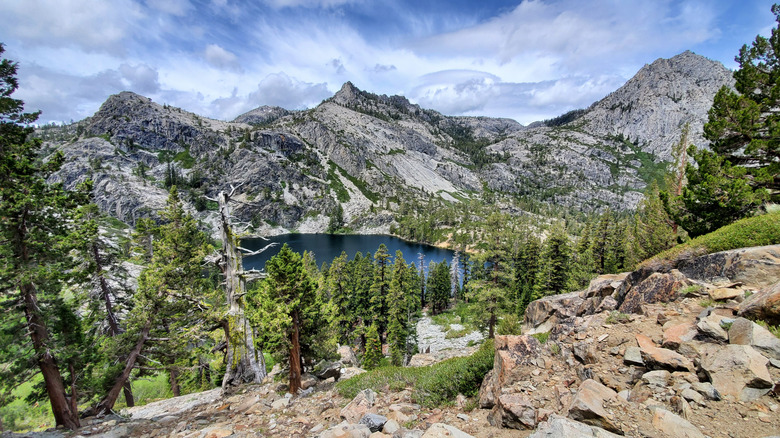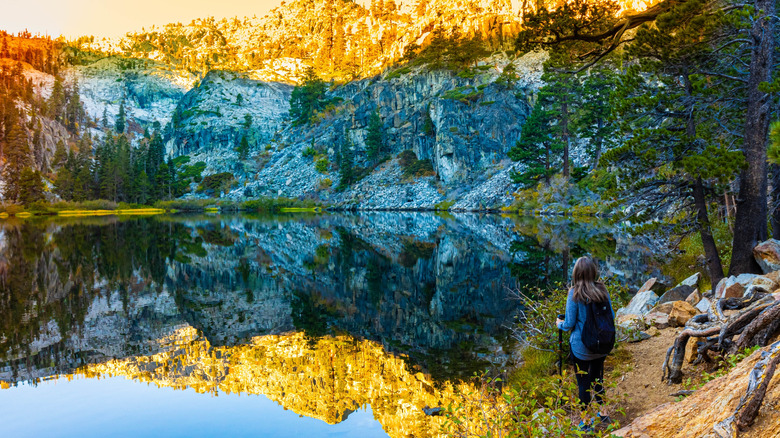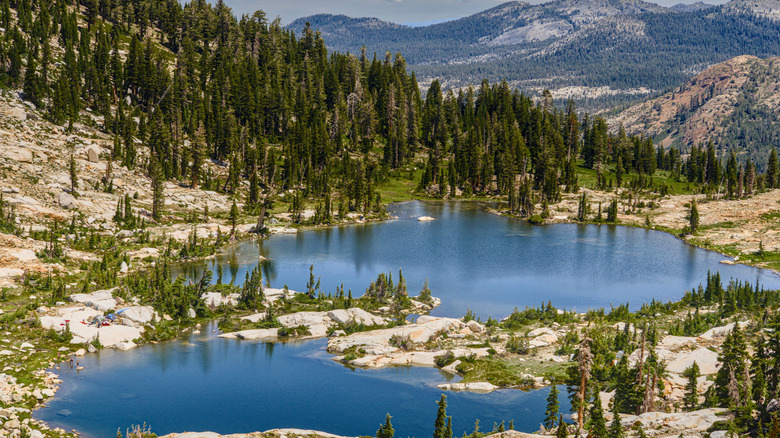Hidden In Mountains High Above Tahoe Is A Breathtaking Wilderness Of Granite Peaks And Glistening Lakes
We may receive a commission on purchases made from links.
California's Sierra Nevada Mountains are home to charming small towns like Shaver Lake and renowned destinations such as Yosemite National Park, where you can hike the legendary rock formations Half Dome and El Capitan. One more unmissable Sierra Nevada destination for anyone who loves outdoor adventure is Desolation Wilderness, located about a 20-minute drive west of South Lake Tahoe. Despite the grim name, you'll be treated to nearly 64,000 acres of incredible granite mountains, glacial valleys, and dozens of beautiful alpine lakes and reservoirs within the Eldorado National Forest. The Washoe people lived in the Desolation Wilderness region for thousands of years before European expansion. The area has been preserved from development since 1899, and it officially became designated as Desolation Wilderness in 1969.
It's got dozens of trails, ranging in difficulty and mileage, and you can mix and match trails to create your own adventure depending on how long you want to stay out in the mountains. With all the incredible hiking options, it's hard to go wrong with any of them. First-timers might want to try the 1.8-mile Eagle Lake Trail. It's a fun way to get a taste of the beauty of Desolation Wilderness; the trail is relatively easy, but there are some steep stair sections. Just 0.5 miles into the hike will get you to Eagle Falls, and as you continue into Desolation Wilderness, you might think that there's no way that the views could get any better — but then you'll arrive at the lake. The parking lot for the trailhead here will get full on summer weekends, so arrive as early as you can to get a spot. There's also a parking fee, separate from other reservation costs.
Backpacking and camping in Desolation Wilderness
For hikers who are into peak bagging, Pyramid Peak is the highest point in Desolation Wilderness at 9,983 feet. There are a few different trails that can take you to the top; they're all steep, and you'll need to be comfortable hiking and climbing through boulder fields. But the view from the peak on a clear day is incredible. There are also loads of fantastic backpacking options; you can easily put together a single night trip or a multi-day adventure. One option is to hike the nearly 17 miles of the Pacific Crest Trail as it runs through Desolation Wilderness, starting from Echo Lake.
If you've got the gear for a solo camping trip, Desolation Wilderness can be a good choice since its trails are well-established and easy to access. For all overnight campers, permits are required year-round, and there is a cap on the number of them issued from Memorial Day weekend through the end of September. You can book ahead of time on recreation.gov. Your reservation is based upon where you'll be staying your first night, with 45 different regions to choose from (you can change locations as you wish after the first night).
If everything is full when you check online, you can still try to score a permit in person; a portion of the overnight permits are reserved for walk-ins. Get them on site at the Placerville Ranger Station in Camino on Highway 50, about halfway between Sacramento and Lake Tahoe. Camping fees start from $5 per person for one night with a $6 reservation fee. Day use permits for Desolation Wilderness are also required, but they are free; you can get them at the trailheads in the summer. Otherwise, you'll need to stop by a Forest Service office first.
Some things to keep in mind when visiting Desolation Wilderness
While Desolation Wilderness is a beloved backpacking and hiking spot in summer and early fall, it can also be fun to visit in winter if you have the right gear, backcountry expertise, and know where to go. The Echo Lake area off Highway 50 is particularly popular in winter for snowshoeing, backcountry skiing, and even dog sledding.
As you plan your Desolation Wilderness trip, there are some essential things to remember. For those who are visiting in summer, you won't be alone. Along with other people, the area is home to all kinds of wildlife, including black bears. If you're planning to camp here, you must have a bear canister to store your food and other smellable items. Mosquitos can be an issue here, with peak season around June and July. They can be the most bothersome at dawn and dusk, so be prepared with mosquito repellent. Murphy's Naturals Eucalyptus Oil Insect Repellent Spray is a good option if you're looking for something without DEET. For maximum protection, you should also cover as much of your skin as possible. And while you can cook over a camp stove, you can't build a campfire in Desolation Wilderness.
If you're planning to day hike in Desolation Wilderness, Camp Richardson, one of Lake Tahoe's oldest resorts, is less than a 15-minute drive away. The Reno-Tahoe International Airport is the closest major airport, about a 90-minute drive. The road from the airport takes you over Donner Summit, which may close during winter and even into spring with big snow storms, so keep an eye on the weather.


